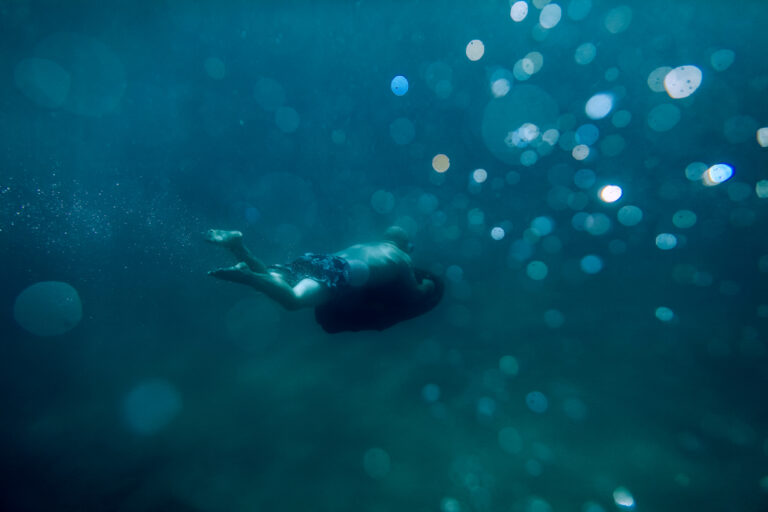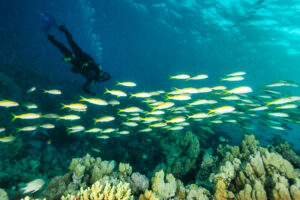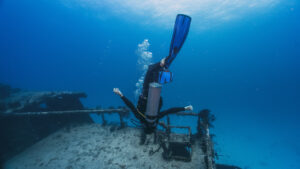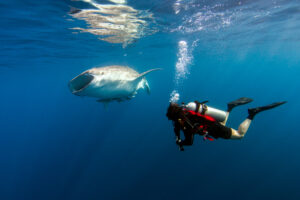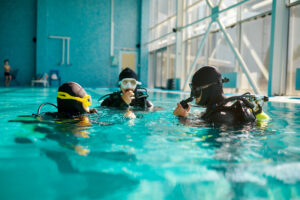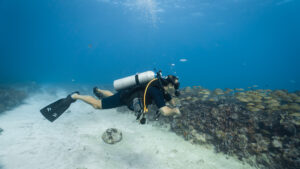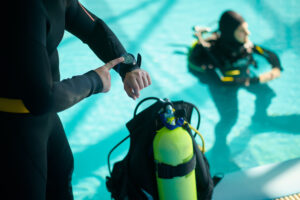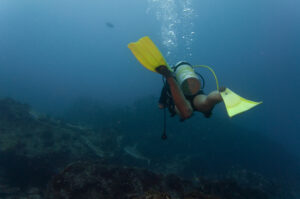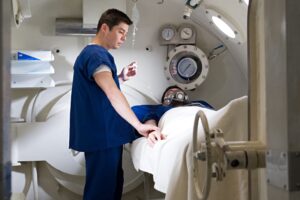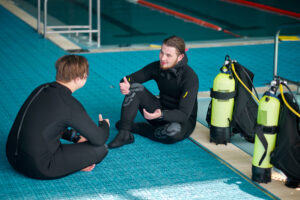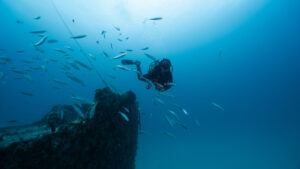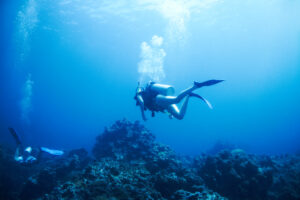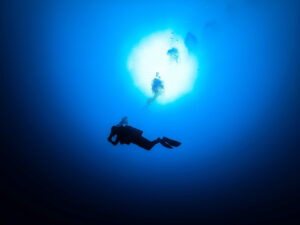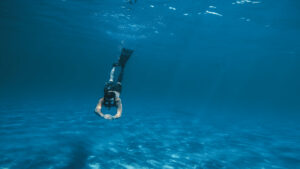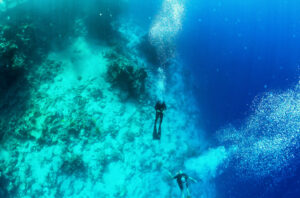What is Active Addition for Semi-Closed Circuit Rebreathers?
Semi-closed circuit rebreathers (SCRs) are advanced pieces of diving equipment that offer unique advantages over traditional open circuit scuba. Open circuit scuba equipment expels each exhaled breath into the water, wasting a significant portion of the oxygen. In contrast, SCRs recycle part of the exhaled gas by removing carbon dioxide and adding fresh gas to replace the metabolized oxygen.
Unlike fully closed circuit rebreathers (CCRs) that maintain a constant partial pressure of oxygen (PPO2), SCRs add a fixed volume of fresh gas with each breath or at constant intervals. Consequently, the PPO2 fluctuates within a range, depending on various factors, including the depth and the diver’s respiratory rate. Thus, managing the gas mixture and volume in the breathing loop becomes an essential aspect of safe SCR diving.
Active Addition System: An Integral Part of SCRs
The active addition system is a key component of SCRs, controlling the feed gas’s addition to the breathing loop. The mechanism adds a specific quantity of gas regardless of the current loop volume, providing a constant supply of breathable gas while preventing hyperoxic or hypoxic conditions. At its core, the active addition system consists of a supply valve controlled by the diver or an electronic mechanism. When the diver inhales, the decrease in loop volume triggers the valve to release more gas into the loop. In electronically controlled systems, gas is added at fixed intervals, ensuring a continuous supply.
The second crucial aspect of active addition is the venting system. To maintain the loop volume within limits, excess gas must be vented out. This action is usually automatic, triggered by the increase in pressure in the breathing loop. It’s the dynamic balance of gas addition and venting that ensures the safe and efficient operation of SCRs.
Active Addition vs. Passive Addition: A Comparative Study
The active addition system differs fundamentally from its counterpart, the passive addition system, in the way fresh gas is supplied to the SCR. While both mechanisms aim to maintain an optimal breathing mix in the rebreather, they operate under different principles, resulting in distinct advantages and drawbacks for each.
Active Addition System: Advantages and Disadvantages
In an active addition system, the consistency of gas addition ensures a constant supply of oxygen, providing a safety advantage by preventing hypoxia. This mechanism’s control also aids in maintaining a stable buoyancy as the loop volume stays fairly constant.
However, the active addition system’s precise control can be a double-edged sword. Malfunctions in the supply valve or electronic controls can lead to rapid changes in the loop volume or gas mix, posing a potential risk. Therefore, understanding and regularly maintaining the equipment is of paramount importance when using SCRs with active addition systems.
Passive Addition System: Advantages and Disadvantages
The passive addition system, on the other hand, relies on the diver’s breathing effort to add fresh gas to the loop. As the diver inhales and decreases the loop’s volume, gas is added from a constant mass flow supply.
One significant advantage of passive addition is simplicity, resulting in fewer potential points of failure. However, it also places a greater responsibility on the diver to manage their breathing and exertion levels, as these directly influence the gas mix in the breathing loop. Over-exertion can lead to a low oxygen mix (hypoxia), while insufficient exertion could result in a high oxygen mix (hyperoxia), both of which are dangerous.
Considerations for Divers: Using SCRs with Active Addition Systems
To safely and effectively use SCRs with active addition systems, divers must grasp both the theoretical and practical aspects of this equipment. This involves understanding the working principles of the active addition system, how to react to potential malfunctions, and how to maintain the equipment.
Pre-Dive Checks and Equipment Maintenance
The reliability of an active addition system is directly related to its maintenance. Regular pre-dive checks and servicing, typically annually or after a set number of dives, are crucial. These checks should cover the inspection of the supply valve and electronic controls for any signs of wear, damage, or corrosion.
In case of a detected issue, it is imperative to resolve it before diving. Sometimes, this may require professional servicing. Many diving equipment manufacturers provide detailed maintenance guides and offer professional servicing to ensure the equipment’s longevity and safety.
In-Dive Management
Once underwater, divers should monitor their gas mix and loop volume regularly. Many modern SCRs come equipped with oxygen sensors and heads-up displays, providing real-time feedback on the PPO2. Divers should use these tools to ensure their safety.
In case of an unexpected change in the gas mix or loop volume, the diver should be prepared to switch to an open circuit bailout system. Regular drills for such scenarios are highly recommended, as reacting quickly and correctly to emergencies can mean the difference between a minor inconvenience and a serious accident.
Evolution and Future Trends in Active Addition Systems
Over the past decades, advances in technology have greatly enhanced the reliability and safety of SCRs, particularly in active addition systems. Today, sophisticated electronic controls ensure a steady supply of fresh gas to the breathing loop, while redundant safety features reduce the risk of malfunctions.
Technological Innovations
Recent developments in active addition systems have focused on increasing precision and reliability. For instance, some SCRs now feature computer-controlled active addition systems that adjust the fresh gas supply based on real-time monitoring of the PPO2 and the diver’s metabolic rate. These systems can also alert the diver of any irregularities, allowing for immediate corrective action.
Moreover, the advent of more durable and corrosion-resistant materials has increased the lifespan of active addition components, reducing the frequency of required maintenance and lowering the overall cost of owning and operating an SCR.
Prospective Developments
Looking ahead, one can expect further improvements in the field of active addition systems. One potential area of development is integrating artificial intelligence (AI) to further optimize gas addition. With AI, the system could learn from each dive, adjusting the gas addition rate to match the diver’s unique metabolic patterns, providing an even more personalized and efficient diving experience.
Furthermore, as the popularity of technical and deep diving continues to grow, the demand for more advanced, reliable, and user-friendly SCRs is likely to increase. This trend will undoubtedly fuel further research and development in active addition systems, pushing the boundaries of what is possible in the world of scuba diving.
Environmental Impact and Sustainability
With growing global awareness about the environment, sustainability has become a crucial factor in every field, including scuba diving. Here, the role of active addition systems in SCRs becomes significant.
Reduced Gas Consumption
One of the key benefits of SCRs, especially those with active addition systems, is their reduced gas consumption compared to open circuit scuba systems. By reusing a portion of the exhaled gas, SCRs help to decrease the demand for the production and transportation of diving gases, which often involve energy-intensive processes. This reduced gas consumption can also extend dive times, offering a more immersive and environmentally-friendly experience for divers.
Mitigating Underwater Noise Pollution
Another often-overlooked advantage of SCRs is their role in mitigating underwater noise pollution. In open circuit scuba, the release of exhaust bubbles into the water creates significant noise that can disturb marine life. However, in SCRs, the venting process in active addition systems is controlled and significantly quieter, leading to a less disruptive presence underwater. This feature not only benefits the marine environment but also enhances divers’ encounters with wildlife, making it a win-win scenario.
Training and Certification for SCRs with Active Addition Systems
Given the complexity of SCRs and the potential risks associated with improper usage, training and certification are fundamental prerequisites for using these systems. This section explores the nature of such training and why it is crucial.
Importance of Training
The use of SCRs with active addition systems demands a solid understanding of both the equipment’s operation and the physiological effects of varying PPO2 levels. Misuse or failure to respond correctly to equipment failure can lead to serious accidents, including oxygen toxicity or hypoxia. Hence, training is not just about learning to operate the equipment; it’s about ensuring the diver’s safety.
Certification Programs
Several dive training organizations offer SCR certification programs. These courses typically include both theoretical and practical components. The theoretical part focuses on the physics and physiology relevant to SCR diving and the specific operation of the active addition system. The practical training involves confined water sessions, where the divers can familiarize themselves with the equipment and practice skills like buoyancy control and emergency procedures, followed by open water dives.
By the end of the course, divers should feel comfortable using SCRs with active addition systems and be aware of the possible risks and the appropriate responses to potential problems. With a certification in hand, divers can embark on a new chapter of their underwater adventure, exploring the depths with efficiency, tranquility, and respect for the environment.
Key Takeaways
While the use of SCRs equipped with active addition systems presents numerous benefits, it is not without its complexities and risks. A diver’s knowledge, skills, and attitudes towards safety are paramount in preventing accidents. As with all forms of scuba diving, the principle of safety first should guide all activities related to SCR diving with active addition systems.

